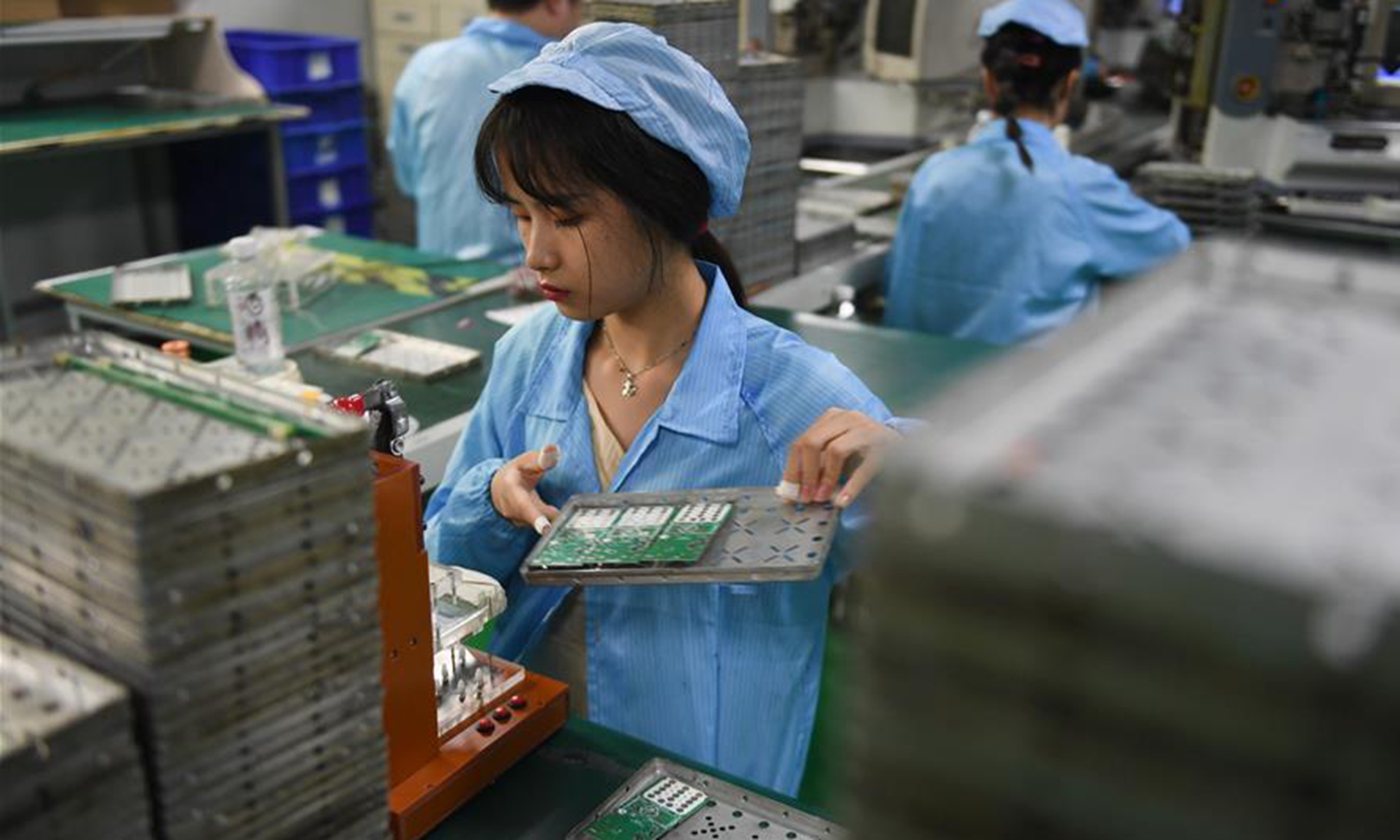China’s manufacturing PMI hits 51.4 in Oct, maintaining expansionary trend for the 8th straight month
Source: Global Times Published: 2020/10/31 16:25:10

Workers make walkie-talkies at an electronics company in Xiamei Township, Nan'an, southeast China's Fujian Province, Aug. 26, 2020. Every year, about 20 million walkie-talkies are manufactured in Nan'an, accounting for more than 55 percent of the global production. Over the past few months, the city's walkie-talkie industry has given active response to the changing market environment amid the COVID-19 outbreak. (Xinhua/Song Weiwei)
China's economy is expected to continue the accelerated pace of recovery in the fourth quarter thanks to stronger performances of the manufacturing and non-manufacturing sectors, boosted by rebounds of both supply and demand from the coronavirus-hit decline, analyst said.
According to official data released by the National Bureau of Statistics (NBS) on Saturday, China's manufacturing Purchasing Managers' Index (PMI) edged down slightly in October to 51.4 from September's 51.5, but still stayed in the expansion range for the eighth month. The 50-point mark separates expansion from contraction on a monthly basis.
Due to the eight-day National Day holidays and Mid-Autumn Festival, October is the off-season for manufacturing production, Liu Xuezhi, an economist at Bank of Communications, told the Global Times on Saturday.
"Manufacturing PMI normally declines in October. Therefore, it is normal for the slight drop this month," Liu said.
From the perspective of industry, the recovery of some traditional manufacturing industries has accelerated. Among them, the production index and new order index of textile, chemical fiber, rubber and plastic products have all increased by varying degrees over the last month.
Sub-indices of new export orders recorded 51.0 in October, up 0.2 percentage point compared with September, while that of import orders stood at 50.8, up 0.4 percentage point.
"China's foreign trade has rebounded further mainly because of domestic policies aimed at stabilizing foreign trade, and foreign investment has continuously improved, and manufacturing industries of the world's major economies have seen a revival," said Zhao Qinghe, a senior analyst from the NBS.
Recovery is also on course in the non-manufacturing sectors which have been severely battered by the pandemic.
China's non-manufacturing PMI has climbed for three consecutive months to 56.2 in October, the highest since November 2013.
"Thanks to the continuous improvement on the demand side, the accelerated recovery pace in the services sector is mainly attributed to the increase of non-manufacturing PMI," Liu noted.
Driven by a surge in consumption during the holidays at the beginning of October, business activity indexes of the rail transport, civil aviation, catering and accommodation all hit the high level of more than 59, according to the NBS.
The official October composite PMI, which includes both manufacturing and services activities, rose to 55.3 from September's 55.1 mainly boosted by the increase in non-manufacturing activities.
"The composite PMI level reached the highest since 2017, indicating that China's overall production and operation activities are continuing to recover, and raising expectations of higher economic growth in the fourth quarter," Liu noted.
Global Times
Posted in: BIZ FOCUS